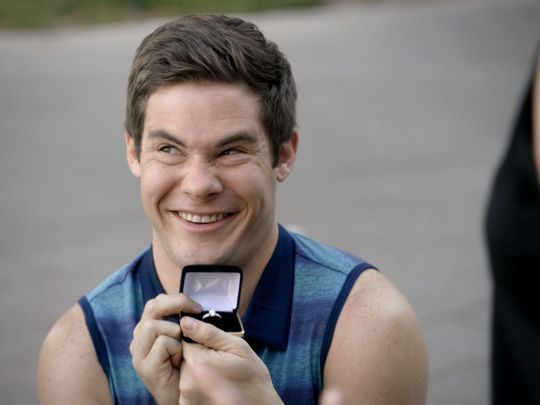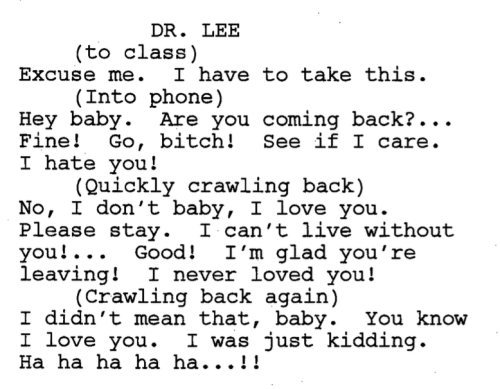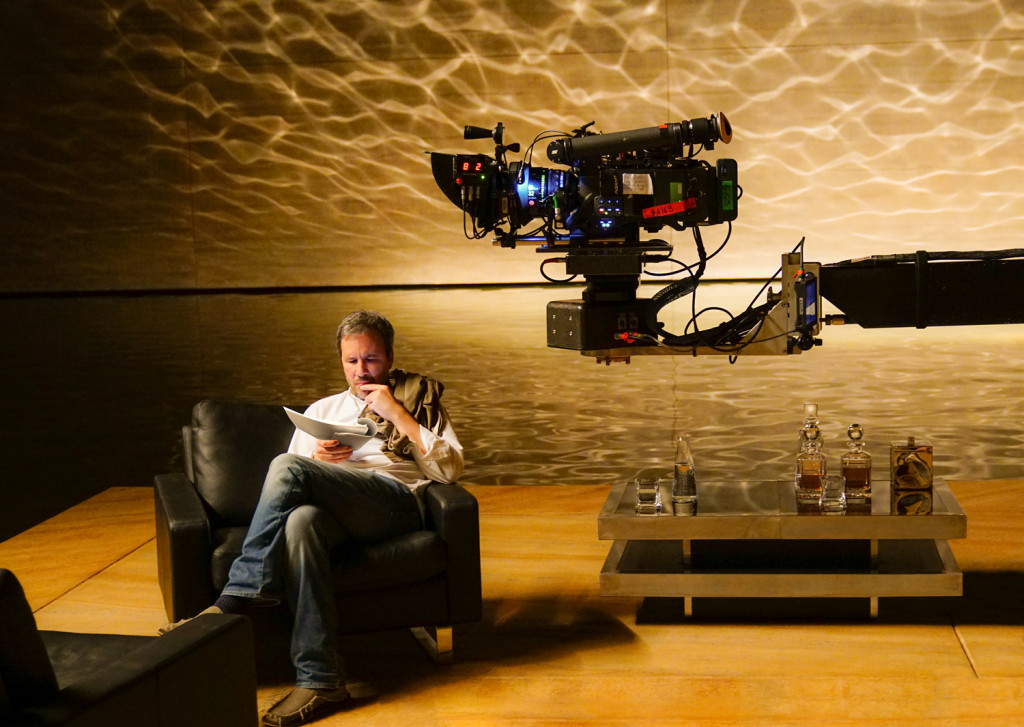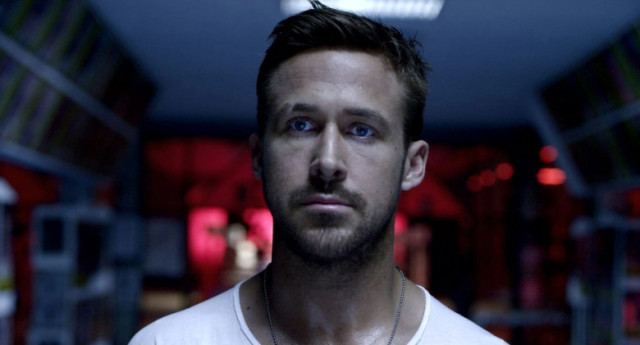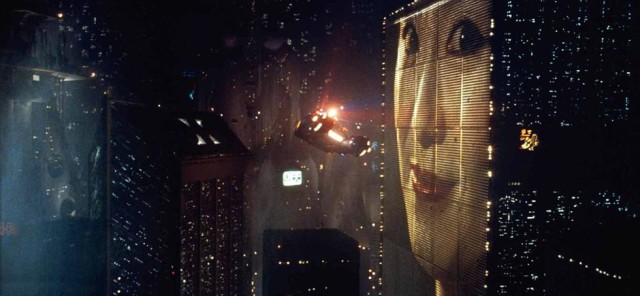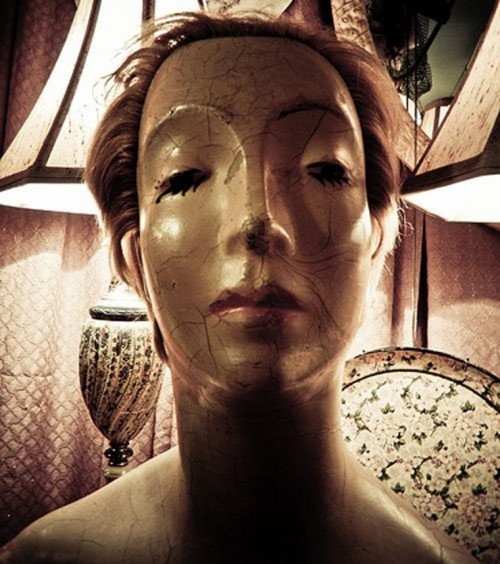Genre: Sci-fi/Comedy
Premise: A couple of loser friends who love video games learn that they’re not only starring in one, but that they’re about to be turned off for good.
About: Today’s script comes from a couple of TV writers who teamed up to sell a spec to WB back in 2008. Danny Zuker would eventually become one of the main staff writers on Modern Family while co-writer Tim Kelleher would manage to get his spec “Grudge Match” through the system back in 2013.
Writers: Danny Zuker and Tim Kelleher
Details: 100 pages 9/20/2008 draft
No matter how many wrinkles Hollywood adds to its well-worn face, no matter how many trends come and go, no matter whether we’re in the Golden Era, Movie Star Era, or Franchise Era, there is one thing that will never go away. The cross-over pitch.
It’s so simple yet so powerful. In order to quickly describe your screenplay, you say it’s a cross between Great Movie A and Great Movie B, and people become instantly excited. It’s so effective that I fall for it every time. If you tell me your script is The Martian meets Silence of the Lambs, I’m going to want to read that!
So buckle my lips and frost my tips when I heard the crossover “Bill and Ted’s Excellent Adventure meets The Matrix.” I mean, like, come on. Is there a better pitch on the planet than that one? Unfortunately, Zuker and his writing partner sold this a couple of years before he hit it big with Modern Family, so the script was sort of forgotten.
Let’s unforget it.
20-something Todd spends most of his time in a virtual reality game with his virtual reality girlfriend, Atheena. But when Atheena dumps Todd by having sex with another avatar right in the middle of a virtual restaurant, Todd’s forced to reevaluate his life.
That may be difficult since his only friend, chubby stoner, Keesh, isn’t exactly winning at life either. The two of them go to the same community college in Tuscon, Arizona, where they try and make sense of their whacked out science professor’s (Dr. Lee) daily rants about quantum physics, most of which he seems to have picked up from Quantum Physics for Dummies.
When Keesh miraculously saves a beautiful girl from a falling beam at the mall, he begins an out-of-his-league romance for the ages. But when satellites start falling out of the sky and huge pits of lava begin opening up in the ground, it’s clear that the universe doesn’t agree with this hook-up.
Soon after, Todd is transported to Planet Doosh, where four Dooshans explain to him that his entire reality is a lie. He’s the only thing that’s real while everything he sees and everyone he knows is a simulation. He’s also told that if he doesn’t stop Keesh and Emma from having sex, that the simulated world he lives in will implode. It will literally be game over.
So back to earth Todd goes, where he’ll have to break the bad news to Keesh. But will Keesh believe him? And even if he does, will he care?
The crossover pitch here is pretty accurate, although I’d throw in two more elements. “Judd Apatow and Kevin Smith present Bill and Ted’s Excellent Adventure meets The Matrix.” If you’re a fan of any of these entities, there’s a good chance you’ll like this.
I enjoyed Control-Alt-Delete’s entire first act, especially the dialogue. Keesh was great, but my favorite was easily community college professor, Dr. Lee, who spends half the movie running around in a kimono. During the script’s first classroom scene, Dr. Lee stops teaching to take a phone call in front of everyone…
When all Kelleher and Zuker had to deal with was the interactions between the characters, everything about Control-Alt-Delete flowed and was hilarious. But once Todd gets called up to Doosh and the creators give him his goal to save the world, something about the script stopped working.
I occasionally see this happen in screenwriting, particularly in comedy scripts. When the writers are allowed to free-flow and have fun with the characters, the writing’s hilarious. But the second that big bad plot comes around (and by “plot” I mean the central goal, stakes, and time constraint), it destroys much of that freedom.
They so feel the need to keep the plot on track that the scenes become too tight, which is detrimental to comedy, where you need the freedom to play around in scenes. It’s all a balancing act, of course, and I see it happen the other way as well, where writers get TOO loosey-goosey in their scenes, to the point where it feels like the party ended 2 hours ago and they’re still looking for another beer.
You could argue Blade Runner 2049 did this – lingered in many of its scenes for too long. But Control-Alt-Delete definitely got less funny once the plot kicked in. And the solution to this is to remember that as long as the scene has a clear purpose, you can still have fun inside that scene. Comedy provides a little more leniency in that area than the other genres as long as you’re funny.
Speaking of the plot, I don’t think Kelleher and Zuker maximized its potential. Specifically, it was a curious choice to have Todd trying to stop his best friend as opposed to a proper villain. Todd had easy access to Keesh. Keesh is going to listen to whatever he has to say. Yeah, he’s got to convince Keesh not to have sex with the girl of his dreams. But this was a relatively easy task to save the world.
Look guys – what you’re always trying to do in screenwriting is make things as hard as possible for your hero. The goal should seem IMPOSSIBLE. Not kind of difficult. But impossible. And all the little tasks along the way should be hard as hell too.
There are some comedy writers out there who are anti-villain and I don’t get it. I think that’s beyond stupid. Villains often become some of the most memorable characters in comedies. That’s because comedy is one of the few genres where you can actually play around with and have fun with the villains. You’re not restricted to just writing a really mean guy. Mugatu, Vizzini, Shooter McGavin, Lumbergh, Principle Rooney. Imagine all those classic movies without those characters. Going without a villain in your comedy is like choosing not to add cheese to pizza. It’s bizarre logic.
The sci-fi comedy genre has lost its way. Its golden age was the 80s. Since then, nobody knows how to write it anymore. It requires not only an understanding of science-fiction and comedy, but also just the right dose of cheesiness. I’ve also found that people who write in this genre write sloppily. They have this attitude that as long as the script approximates what it’s setting out to do, that’s good enough. I’m sorry but that’s not good enough. If you love this genre, like I do, you should strive for greatness. The last 40 pages of this script are messier than a hoarder’s kitchen. And that’s too bad. Because I thought this script had a lot of potential.
Script link: Control-Alt-Delete
[ ] What the hell did I just read?
[x] wasn’t for me
[ ] worth the read
[ ] impressive
[ ] genius
What I learned: Usually, when I randomly ask someone what their script is about, they’ll start talking, and explaining, and back-tracking to remind me of something, before asking me where they left off, before repeating some stuff, before continuing to explain. It can get bad fast. If you’re not ready to pitch your entire idea, have a one-sentence synopsis and a 2-movie crossover pitch ready to go instead. So, for example, with Edge of Tomorrow, you’d say, “It’s about a guy who gets stuck in a time loop fending off the same alien invasion over and over again. It’s Groundhog Day meets War of the Worlds.”
Genre: Science Fiction
Premise: When an android Blade Runner discovers his entire life is a lie, he’ll stop at nothing to find out where he came from.
About: The long-in-development sequel to Blade Runner finally hit theaters this weekend, bringing in 32 million dollars on a 155 million dollar budget. That’s eye-opening. Not the 32 million part. Dark and thoughtful sci-fi never does blockbuster business. But that Warner Brothers and Sony gambled 155 million dollars on the movie in the first place. They had to know that this wasn’t Guardians of the Galaxy, right? Maybe they got lost in Ryan Gosling’s soulful eyes and got delusions of grandeur. One of the more shocking decisions for this sequel was bringing back the film’s original writer, Hampton Fancher, who, since 1982’s Blade Runner, literally has two writing credits that aren’t Blade Runner related.
Writer: Hampton Fancher and Michael Green (story by Hampton Fancher) based on characters from Philip K. Dick’s novel, “Do Androids Dream of Electric Sheep?”
Details: 2 hours, 45 minute running time
Before we get to the review of today’s film, let’s all put our Honesty Hats on and be real. The original Blade Runner had a terrible screenplay. It was bad, guys. Messy, wandering, lazy. Those who defend it don’t understand screenwriting.
So why is it such a beloved movie? Well, it isn’t. Or, I should say. It wasn’t. When it came out, nobody saw it. And those who did reacted with a collective, “Eh?” Why? Because of that aforementioned bad screenplay.
But one of the things cinema geeks love to do is claim failures and remake them into overlooked classics. It provides them with a sense of ownership. The movie is “theirs” because “they” are the ones who found and built it up.
Plus it’s cool to say you love something that other people don’t. And a funny thing happens if enough people claim ownership over a failure. You start to look ignorant if you don’t agree. And so what was, at best, an interesting experiment, has become some sort of misunderstood classic.
Let me be clear. I’m not saying that Blade Runner, on the whole, was a disaster. Just the screenplay. Blade Runner’s use of art direction, cinematography, and score, are some of the best in the history of the science-fiction genre. So much so that, at times, you’re tricked into believing what you’re watching is better than it is.
But guys. It always comes back to the story. And the story for Blade Runner was a mess. Despite seeing the movie several times over the years, I continue to forget the plot outside of “REPLICANTS.” That’s a classic sign of a bad screenplay.
Where does that leave us with this new iteration? Good question. Some say it’s better than the original. To them I would say, well, it didn’t have a whole lot to live up to on the script side. It just needed to make sense. As far as the visuals and the soundtrack? Villeneuve definitely brought in his own take on that. And while it was interesting, I don’t think he lived up to the stuff Ridley Scott did 35 years ago.
2049 follows a blade runner named “K” (Ryan Gosling). In the previous movie, humanoid robots, known as “replicants,” became faulty. So LAPD built a police unit to hunt them down. They called these special cops, “blade runners.” Rick Deckard (Harrison Ford) was one of the best of these blade runners.
Cut to now, 27 years later, and some of the old replicants are still out there. So we’ve built a new kind of blade runner. A robot version. K is one of these “robot” blade runners and spends the majority of his time struggling with the fact that he’s not human, that he doesn’t have a soul.
During an investigation, K finds out that a female replicant may have given birth to a child many years ago, which is impossible. He goes on the hunt to find this child, which leads him to Decker (who’s hiding out in a dystopian Vegas). I think you know where this is headed. It starts to look like K might, in fact, be the child, and that Decker may, in fact, be his father. However, the deeper K digs, the less everything makes sense.
Let’s start by discussing the directing. I’ll just say it: Denis Villeneuve is too minimalist and his imagination is too limited. After 30 minutes, you know, visually, exactly what you’re going to get. We’re either going to be outside in some color-tinted wasteland or inside in some white or yellow rectangular room.
To say that this movie is a visual masterpiece, as some have stated, is true to an extent. You can screen-grab 50 frames of this movie and come up with a pretty stellar coffee table book. But when you’re watching it in real time, it all feels so… similar. Is there really that much difference between the world of a foggy junked out San Diego and a foggy crumbling-to-pieces Las Vegas?
There’s a moment in 2049 when K goes down into the LA streets and meets a prostitute. It’s a clear ode to the original Blade Runner, with the bustling undercurrent of hustlers, the neon-lit store signs, and the clear umbrellas. It was one of the only times that Villeneuve abandoned his minimalist aesthetic. And you could see how uncomfortable he was, how desperate he was to get out of there. The actors were practically racing through their lines so Denis could get back to yet another rectangular room.
I don’t have a big problem with 2049’s visuals in a vacuum. Again, they’re beautiful as individual frames. The problem was that they exacerbated how slow the story was. The visuals were so similar from scene to scene, and so minimalist, that when a scene went on for five minutes longer than it should have – which happened often – you began to notice just how little was going on with the visual aesthetic.
I’m a big believer that you need contrast in film. You need to follow sad scenes with happy ones. If you’re going to take us into Death Valley in one scene, bring us to Mardi Gras the next. Because what happens when you keep giving us the same visuals and the same downbeat tone over and over again, we, the audience, GET AHEAD OF YOU. Because the imagery is exactly what we expect, we become the creator. We are essentially dictating what happens next. And that’s a screenwriting sin. The writer (and director) should always be ahead of the audience. Never the other way around.
And let’s talk about the length since this movie was way too long. When trying to determine how long your script should be, you need ask only one question: How long does it want to be? If your story has a big ensemble with lots of characters and many subplots – think “It” – you’re going to need time. But 2049 was a straightforward single-protagonist investigation. It didn’t need a lot of time to tell its story.
I’ll tell you what we definitely didn’t need. We didn’t need a 30 second shot of someone watching rain hit their hands. That’s self-indulgent bullshit. A 5 second shot will do AT MOST. If you indulge in every little moment like that, you’re adding 5, 10, 15 minutes to your running time.
And what does that mean on the screenwriting end? It means you’re LETTING TOO MUCH AIR OUT OF YOUR STORY. Every time you stay too long in a scene or too long in a moment, you’re releasing air from the balloon. Tension and interest are dissipating. That’s a fancy way of saying WE’RE BORRRRRRED.
This is why one of the first things they teach you in any screenwriting course is: CUT OUT THE FAT! Get into scenes late. Get out of scenes early. Don’t include a scene unless it moves the story forward. Blade Runner 2049 is what happens when writers and directors get full of themselves. They think the storytelling rules that have been around for 100 years don’t apply to them. And what’s the result? An overlong movie that’s mostly boring and that will only be enjoyed by Blade Runner geeks and cinema nerds.
Blade Runner 2049 is fun to look at for awhile. Its technical achievements are, for the most part, impressive. But as a story, it’s boring. It’s too icy. Too devoid of emotion despite emotion being a key theme. It’s visually monotonous. People will shame you if you dislike this film. They’ll tell you you don’t understand it or that you’re not a fan of movies. But I’m here to tell you it’s okay. It may be time to admit that the Blade Runner premise isn’t strong enough to build movies around.
[ ] What the hell did I just watch?
[x] wasn’t for me
[ ] worth the price of admission
[ ] impressive
[ ] genius
What I learned: The fallout of moving through your story too slowly or too indulgently is that the reader will consistently lose track of what’s going on. If you’ve written four 7-page scenes since the last major plot point was established, the reader is going to have a hard time remembering what that plot point was. This would happen often in Blade Runner 2049. I’d ask myself, “Wait, why is K in San Diego again?” “Wait, why is he visiting this weird woman who needs to live in a bubble?” Keep your storytelling tight guys. And know that the longer you indulge, the more you’re boring your audience.
Genre: Horror
Premise: After learning her deceased mother might still be alive, a young woman traces the mystery to an abandoned farmhouse occupied by eerie mannequins – mannequins that move when no one’s looking.
About: Haunted dolls/puppets/mannequins. Staples of the horror genre for decades. But here’s my problem: most of the time, the real threat turns out to be something else — like ghosts or a masked killer. Did Annabelle even blink? Of course, there’s the “Child’s Play” and “Puppet Master” movies, but those are closer to black comedies. “Human-Like” is my attempt to create a sincere, creepy film that delivers on the promise of inanimate objects coming to murderous life. The story was inspired by the John Lawson house in upstate New York, a supposedly abandoned residence with oddly dressed mannequins on the porch. When I read that, I knew immediately – horror film! Thanks for your time and I appreciate any thoughts you might have.
Writer: Michael Cahill
Details: 104 pages
It’s a Blade Runner weekend. I’m going to be all over that nine hour cinematography porno. Review coming Monday. In the meantime, we’ve got to get prepped for Halloween, right?? It’s only 25 days away. But you don’t have to wait that long to be scared. I hope you’re okay with inanimate objects trying to kill you. Time for some… hummmaaaaaan liiiiiiiiiiiiike…
Bridget Walker has had a tough life. When she was seven years old, she watched her mom die in a house fire, plunging through a collapsing floor just as the fireman arrived to save Bridget.
Now, 23 years later, at 30, Bridget is the primary caregiver to her dementia-ridden grandfather, Declan. Just as Declan’s symptoms from the disease are worsening, he suffers crippling heart failure and must endure emergency surgery. Declan survives surgery, but doesn’t last much longer. On his death bed, he delivers some shocking news, “Your mother is still alive.”
Bridget starts digging through Declan’s old things and discovers letters written to him over the years, letters that were written by her mother. But there’s something eeire about these letters. They’re written in shoddy 2nd grade penmanship. Which makes Bridget question their validity.
She’s intrigued enough to dig further though, eventually finding the name of the man whose home the letters were sent from: Dorin Yuval. Against the recommendation of her cousin, Harper, Bridget drives out into the country to question Dorin.
Once she gets to his farmhouse, she notices that the entire exterior is populated with life-like mannequins, most of them posed in various forms of gardening. After endless knocking and no one answering, she retreats to a neighbor’s home, Sean, who’s living with his teenaged daughter, Olivia.
Sean tells Bridget that Dorin has always been a bit eccentric, and that he believes the mannequins, which have only been around for a few weeks, are his latest art experiment. The divorced Sean becomes a somewhat witting accomplice to Bridget’s investigation, and the more digging they do, the more creepy this mannequin experiment gets.
For example, why do the gardening tools the mannequins are handling always seem to be caked with fresh dirt? Determined to find out what happened to her mom, Bridget blankets the town to find out anything she can about Dorin, only to discover that he has a very dark past. Will Bridget find her mother? Will her and Sean develop a romance? And what’s up with those creepy human-like mannequins? Why does it seem like they’re holding a secret as well?
I was into this for a good 30 pages. Despite the beginning being one continuous string of heartbreaking scenarios (mom dies in fire, grandpa has dementia, grandpa has heart attack, grandpa has surgery, grandpa dies), the writing was strong and descriptive, and Michael made me care enough about Bridget and the mom mystery that I genuinely wanted to find out what was going on there.
However, once we got to the town, the foundations of this script began to crack. It seemed oddly convenient that the mannequin presence began just weeks before Bridget showed up. I mean, her mom’s been missing for 23 years. What are the chances that right when you show up to the house she’s supposedly at, dozens of mannequins start posing outside? I know this is explained later. But, at the time, it seemed awfully coincidental.
Sean and his daughter were way too helpful. From the second this mysterious woman shows up on their doorstep at midnight, he’s more than happy to tell her anything she needs to know and give her anything she needs. As we’ve spoken about in previous Scriptshadow posts, you don’t want to say ‘YES’ to your character. You want to say ‘NO.’ You want people to be skeptical of them. You want them to have to EARN their help. They shouldn’t be rolling out the red carpet just because your hero says, “Hi.”
But the biggest problem here is that we’re not in danger enough. And that’s what I was worried about as soon as Bridget set out to find her mother. I thought, “How is Michael going to keep Bridget in mannequin danger for the next 75 pages?” It turns out he didn’t. Instead, we stay outside of the mannequin house and the story becomes more of an investigation that takes us all over town.
Keeping your hero inside of danger for an extended period of time in horror films is a topic we just discussed with “It.” When you don’t lock your hero inside a setting in the horror genre (Alien), your workload becomes exhausting, as you must repeatedly look for ways to drum up scares. Horror works best when there’s no way out. It makes me envious of how clever movies like Poltergeist were. The family couldn’t leave the house because their freaking daughter was locked inside of it!!
Another common debate in the horror community is jump scares. There are all these people who say they hate jump scares. They’re liars. Everybody loves jump scares. What they hate is bad jump scares. The difference between a good jump scare and a bad one is how organic it is to the story. Staying with Poltergeist. The fact that we set up the clown doll on the chair early in the movie. Then we set up that a poltergeist was haunting the house. Then, one night, when the son looked over to see that the clown was no longer in the chair, and we played out the suspense until it popped up to attack him – that’s an organic jump scare and it will work every time.
Here in Mannequin, Bridget checks into the motel, goes to her room, and then, just as she opens the door – A BUNCH OF MANNEQUINS ARE STANDING THERE – causing her to jump back, look again, only to realize it was her imagination. That’s a cheap jump scare. The rules of this universe don’t dictate that these things can travel into your mind and convince you they’re in front of you. It’s just a cheap attempt at a scare and those types of jump scares should be avoided.
But Human-Like did something most writers don’t do, which is make me care about the main character’s situation. I was genuinely heartbroken for Bridget after she lost her mother. That’s why, even when some of the scaffolding on this story started to crumble, I was still eager to find out what happened next. It’s a testament to how important it is to get the characters right.
Script link: Human-Like
[ ] What the hell did I just read?
[x] wasn’t for me
[ ] worth the read
[ ] impressive
[ ] genius
What I learned: One of the telltale signs of an amateur or beginner screenwriter is that they keep hitting the same tonal beat over and over again, not realizing that the reader needs balance. So here, when mom dies in a fire, grandpa has dementia, grandpa has heart attack, grandpa has surgery, grandpa dies – I knew as soon as I read that sequence that there’d probably be script trouble down the road. You have to balance things out with upbeat and happy scenes in between the sad ones. OR don’t write that many sad scenes in a row to begin with. Cut some out. An endless string of sadness usually leads to an endless string of badness.
So I got to thinking after Monday’s post. Because people wanted me to expand on the topic – How to break in. And I’ve spent the last two hours, sitting in this chair, staring at the wall, thinking about that and only that, looking for that kernel, that ONE MAGICAL MORSEL, that could somehow distill this answer down into a single actionable piece of advice. “JUST DO THIS AND YOU’LL BECOME A PROFESSIONAL SCREENWRITER” was the goal.
Needless to say, that was a failed experiment.
Sort of.
Whenever I thought I’d come up with something, I’d realize, “But they still need to put 7500 to 10,000 hours of work into learning how to write.” There was no way around that. And I think that’s the part no new screenwriter wants to hear. Or, it’s not so much they don’t want to hear it. It’s that they’re looking for a shortcut, a way to shave off a thousand hours here or a thousand hours there. I suppose that’s possible if you’re one of the lucky ones – a writer with innate talent. But, baseline, we’re talking about 5000 hours AT LEAST before you’re ready.
Assuming you’ve put in that time, there’s ONE THING I’ve found is the closest you’re going to get to a single “Holy Grail” piece of actionable advice on how to break in. And I figured it out by going in the opposite direction. I asked myself, “Okay Carson, what is the WORST thing a screenwriter could do? The one thing that would ensure failure?”
And the answer to that was easy: A bad idea.
The most common problem I see in amateur screenwriting is BAD SCRIPT IDEAS. I read so many submission e-mails where I literally close my eyes, slowly shake my head, and think, “What is this person thinking??” I know, just by looking at that logline, that the script has ZERO CHANCE of being good. Not even .00001%. Zero. And it’s sad. Because even if they’re a good screenwriter, they’re working with a faulty premise. There’s no strange attractor, no clear sense of conflict, no irony, no clear goal, no imagination, no clarity. The idea is just HORRIBLE.
Horrible idea generation tends to break down into two types. The beginner screenwriter who doesn’t yet know what constitutes a good idea. And then the more frustrating scenario – a writer who simply doesn’t realize his idea is bad. This usually happens because a) he doesn’t ask anybody whether his idea is good or b) nobody tells him his idea is bad. And “b” is, unfortunately, a common scenario. Nobody wants to be the asshole. Nobody wants to destroy the writer’s enthusiasm. What they don’t realize is that by not being truthful, they’re sending that writer on a one-year journey of misery where they’ll be turned down again and again, because people either won’t like the idea enough to read it, or the ones who do read it, will hate it because the idea was faulty in the first place.
This is why I encourage people to send me their loglines. I rate them 1-10. If it’s below a 7, I tell them not to write it. And if you don’t have $25, find a friend who knows screenwriting and ask them to do the same. Make sure you preface it with, “Please please please be honest. Tell me if it sucks.”
This indirectly leads us to our Holy Grail answer. The one thing that gives us the BEST CHANCE at breaking in is… A GOOD IDEA!!!
That’s all it takes to open all the doors, to line up all the agents, to get the studios bidding. Ehh, not exactly. But what a good idea does do is it INCREASES YOUR CHANCES AT SUCCESS EXPONENTIALLY. Everyone will at least open your script if it’s a good idea. And since Hollywood is a numbers game, the more reads you get, the better the chance you’ll finally get that “yes.”
All of this begs the question: What is a good idea, Carson?
Look, if I had a bunch of great script ideas, I wouldn’t be posting them here for you guys. I’d be writing them or hiring other writers to write them. A great script idea is no different from a great song hook. You don’t know if it’s going to catch unless you put it out there and see what people think. The advantage YOU have is that it only takes minutes to come up with an idea. And it only takes minutes to send that idea off and get someone’s opinion. So there’s power in that. You can send a lot of ideas out there with very little time wasted. That’s preferable to wasting an entire year of your life on a script only to learn afterwards that the idea sucked.
Or you know what’s worse than that? Is writers who don’t even realize that that’s the reason their script failed. They might assume they’re just bad writers and quit. But had they been working with a GOOD premise instead of a BAD one, everything about their writing would’ve been better. I’ll give you a real-world example of this. Dan Gilroy, who wrote one of my favorite scripts, Nightcrawler – great character, unique premise – also wrote a new Denzel movie, Roman J Israel, Esq. Awful premise. Confused concept. Bad script. From everyone I’ve heard who saw the movie – they say it’s bad. That bad idea turned Gilroy into a bad writer for one script. That’s how important concept is.
Cause I don’t want to leave you guys out in the dark. Here are the last three articles I wrote about how to come up with a good script idea. Read them. Embrace them. Make the most of them.
The Secret To Better Movie Ideas
The Power of Reinventing Ideas
Ten Tips to Come Up With Better Movie Ideas
But the main thing is GET FEEDBACK on your idea. Hell, you have one of the best screenwriting networks on the web right here at Scriptshadow. Take advantage of it! Tell people to be “brutally honest” when assessing your idea. Because if you’re SUPER DUPER EXCITED and tell them, “This is my best idea ever,” before asking their opinion, they’re going to lie to you. They don’t want to rain on your parade.
Good luck!
Carson does feature screenplay consultations, TV Pilot Consultations, and logline consultations. Logline consultations go for $25 a piece or 5 for $75. You get a 1-10 rating, a 200-word evaluation, and a rewrite of the logline. All logline consultations come with an 8 hour turnaround. If you’re interested in any sort of consultation package, e-mail Carsonreeves1@gmail.com with the subject line: CONSULTATION. Don’t start writing a script or sending a script out blind. Let Scriptshadow help you get it in shape first!
Surprise surprise. Good Script Wednesday! And written by George Clooney’s best friend, no less…
Genre: Period/Drama/Thriller
Premise: In 1832, a 13 year-old girl is forced to catch a ride on a ship to America under the watch of a dangerous motley crew. But as the voyage evolves, she realizes it is the Captain, the only man she trusts, who is the real danger.
About: I’m telling you guys. Don’t sleep on Danny DeVito as a screenwriter. The man clearly likes to write in his spare time. And this script is rumored to be his best, an adaptation of the novel. May we have found another hidden gem? Read on, castaways!
Writer: Danny DeVito (based on the novel, “The True Confessions of Charlotte Doyle” by Avi)
Details: 96 pages – 2010 draft
The “What Spec Should I Write to Sell” game is like stock trading. Everybody’s looking for a hot tip. Except instead of looking for tips, you’re looking for trends. A trend, in the movie world, is born when something that wasn’t expected to do well, does well. It’s a message to the rest of the industry that screams: “That thing that nobody thought would work? It works! Let’s copy it!”
But what’s the old saying? “By the time a regular Joe hears a hot stock tip, it’s no longer hot?” The same can be said for Hollywood. Once a trend hits your ears, hundreds of professional screenwriters are already exploiting it. And these are people better connected than you.
So the trick is to find the NEXT thing – the thing that nobody knows about yet. And the only way I’ve figured out how to do that is to predict where a trend will evolve. For example, when John Wick was a hit, everybody wanted to make their version of John Wick. But the forward-thinker said, “Everybody’s going to be writing John Wick clones. I’ll write Jane Wick.” If you would’ve done that two years ago, you would’ve beaten everyone to the current Jane Wick punch.
Using that logic, I believe the next trend is going to be exploiting major genres with female leads. So I’m thinking period pieces and biopics with female leads could be the next big trend. It’s just a guess, but a well-informed one. And we kind of have that today, albeit with a younger lead than Hollywood prefers.
Lucky for Charlotte Doyle, it’s a really good script. And I’m going to assume they’ll figure out a way to get it made.
It’s the 1830s. Charlotte Doyle is 13 years old and lives in England. Her rich father wants to bring her over to America but doesn’t want to interrupt her schooling in the process. So he’s going to go over there first, and when she’s done with her semester, she’ll take passage to America in one of his cargo ships, the Seahawk, with a few other well-to-do families.
Excccccc-ept when she shows up, there are no other families. And the crew is scary as shit, going so far as to encourage Charlotte to stay away. This is a bad ship, and only bad things happen on it, they tell her. However, there’s nowhere for Charlotte to go. She has no choice but to get on this dreadful thing and hope for the best.
Once the ship leaves the dock, Charlotte formally meets the crew, all dirty grubby men who look like they have a shitload of bad thoughts plastered across their faces. The oldest, Zachariah, tells Charlotte he and her are going to be good friends, which of course terrifies her to death.
Luckily, the Captain, Jaggery, is a refined man, and tells Charlotte that everything is going to be A-okay. This sets her at ease. But only for a while. Charlotte senses that the crew is up to something, especially after hearing that, on their last trip, Jaggery imposed a form of torture on the second-in-command that was so awful, it ripped his arm off. This boat has been nothing but evil energy ever since.
(spoilers) And that’s when the truth finally comes out. The tortured second-in-command has stowed away on the ship, specifically to enact revenge. And he’s got the backing of the entire crew. That’s why they were warning Charlotte away. Cause this voyage was always about murder. Poor Charlotte is now stuck in the middle. But she has no idea just how bad things are going to get.
I loved this script.
It was so FUN. I loved that DeVito used basic storytelling principles to keep the reader engaged. Nothing flashy. Nothing overly-complicated. Just like I tell you guys. Keep it simple.
He used anticipation, suspense, and foreshadowing to drive our interest throughout the first half of the script. The second Charlotte walks on the Seahawk, we sense something bad is going to happen. And that’s all writing is. You’re implying something important is going to happen later (usually something bad) and the reader has no choice but to keep reading. They HAVE to find out what happens.
You should always be dangling a carrot, guys. In fact, you should be dangling multiple carrots. You should be implying that something big or important or scary or mysterious is going to happen later.
When you do that properly, basic scenes become nail-biters. For example, there’s the simplest of simple scenes 50 pages in. A member of the crew asks Charlotte to get something from his quarters. So Charlotte, this tiny 13 year-old girl, must descend into the bowels of this broken down ship, into a room with a bunch of dirty grungy men — and they’re all just watching her as she squeezes between them to retrieve the object. Nothing is even said and it’s one of the most tense scenes in the script.
The script also has a GREAT villain. Captain Jaggery is an awful human being. And he fits the mold of villains that I find are the most effective. Which is, at first, he appears like a good person. He seems to have our heroine’s best interest at heart. But once things go to hell, you see how awful this man really is. There’s a great scene where the crew tries to rise up against him and he just walks out with a gun, shoots the leader of the pack, tells them to kick his body over the side of the boat, and that’s that. It’s time for his nightly tea.
I also loved the relationship between Charlotte and Zachariah. I’m a sucker for the “rich/snobby” character who initially rebuffs the “lesser” character, only for them to become BFF’s later. I don’t know why. It gets me every time. And it’s done quite well here, with a few unexpected twists along the way.
The script’s one major weakness is the logic towards the end. Jaggery frames Charlotte for killing a crew member and orders her to be hanged in 24 hours. I’m sorry, but, I don’t care what tale you spin for your boss. If you show up and tell him his daughter’s dead, you’re probably not sailing for the corporation anymore.
But this would be a fairly easy fix. Don’t have it so that this is one of the dad’s ships. Have the ship be independent of the father’s business.
I expected this to be stuffy and boring like your average period piece. Instead it’s pulpy and exciting, more so than some of these 200 million dollar studio tentpole movies. I would love to see this get made.
Script Link: Charlotte Doyle
[ ] What the hell did I just read?
[ ] wasn’t for me
[ ] worth the read
[x] impressive
[ ] genius
What I learned: FIX DON’T CONVINCE. You can’t talk yourself out of faulty movie logic. Believe me, I’ve seen many screenwriters try to do it. So in the aforementioned plan to kill Charlotte, DeVito writes a scene where he tries to make it seem plausible. Jaggery tells Charlotte, “I’ll come up with another story. I’ll tell your parents you died in an accident.” The problem isn’t in what Jaggery says. The problem is in the plot choice to begin with. It’s just not believable that, under these circumstances, Jaggery would be able to kill Charlotte and get away with it. Fix the plot hole. Don’t try and convince us that it isn’t there.

